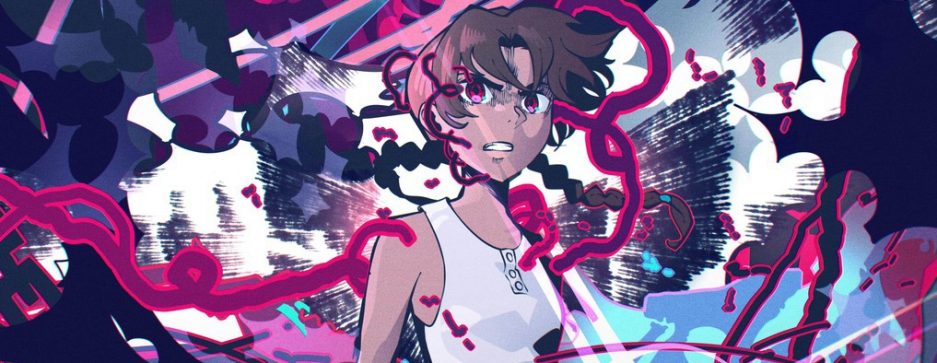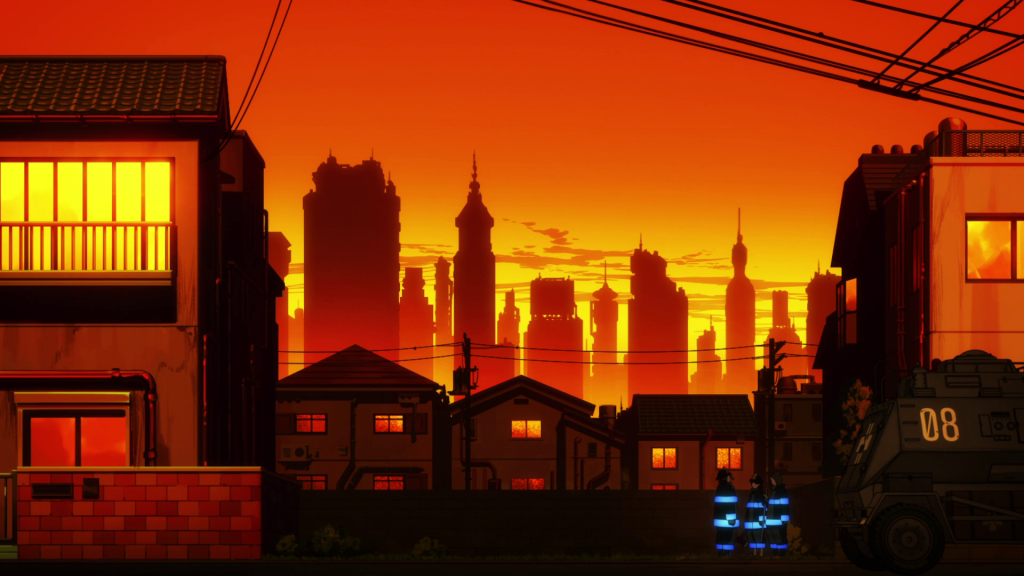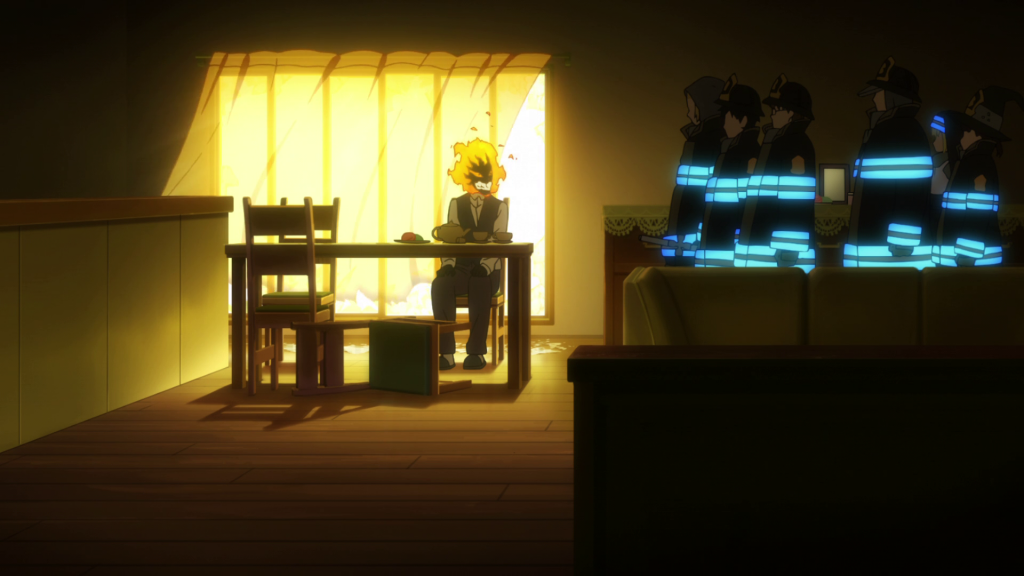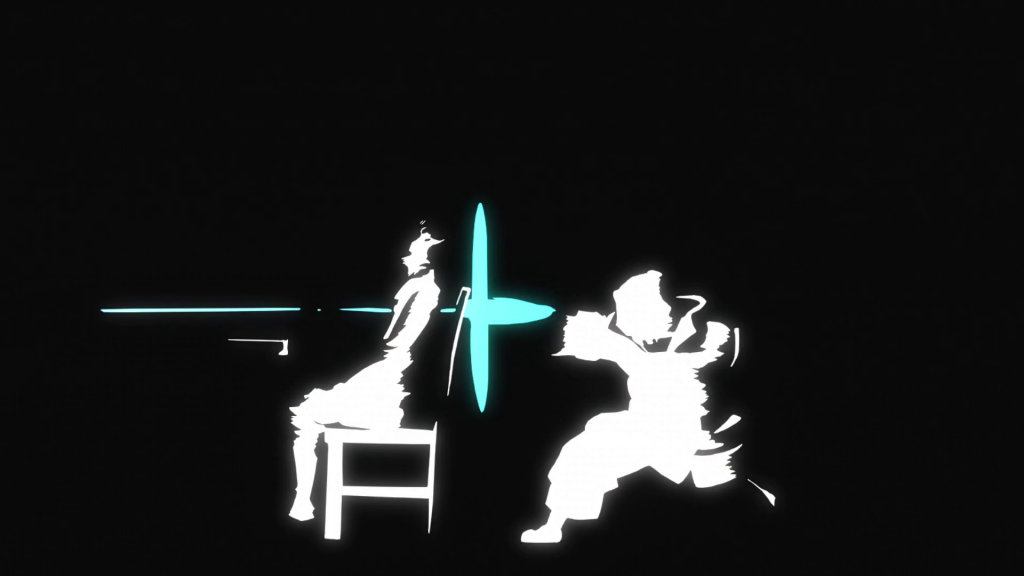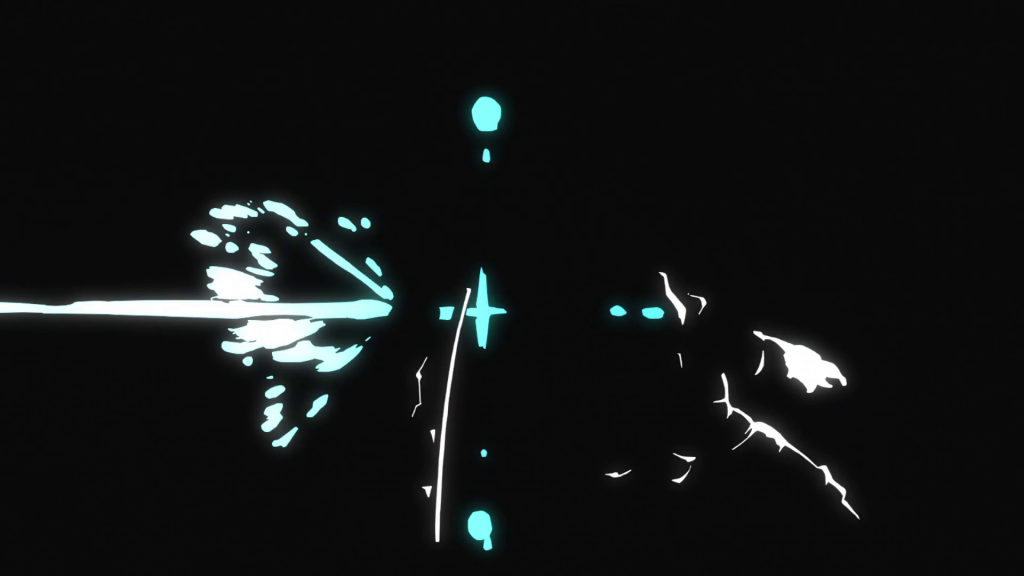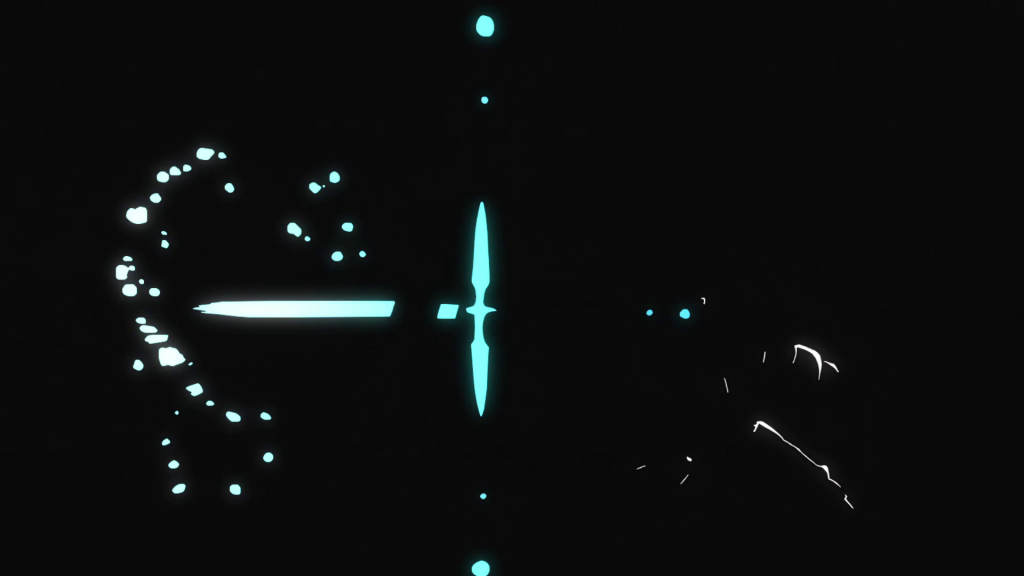What was initially advertised as nothing more than an animation spectacle to behold has recently made the case for there being a lot to digest beneath the surface due to some key changes to the source material. Let’s dive right into the second episode of Fire Force, discuss those individuals responsible and investigate all the places where the anime has (thus far) soared high above it’s black-and-white counterpart.
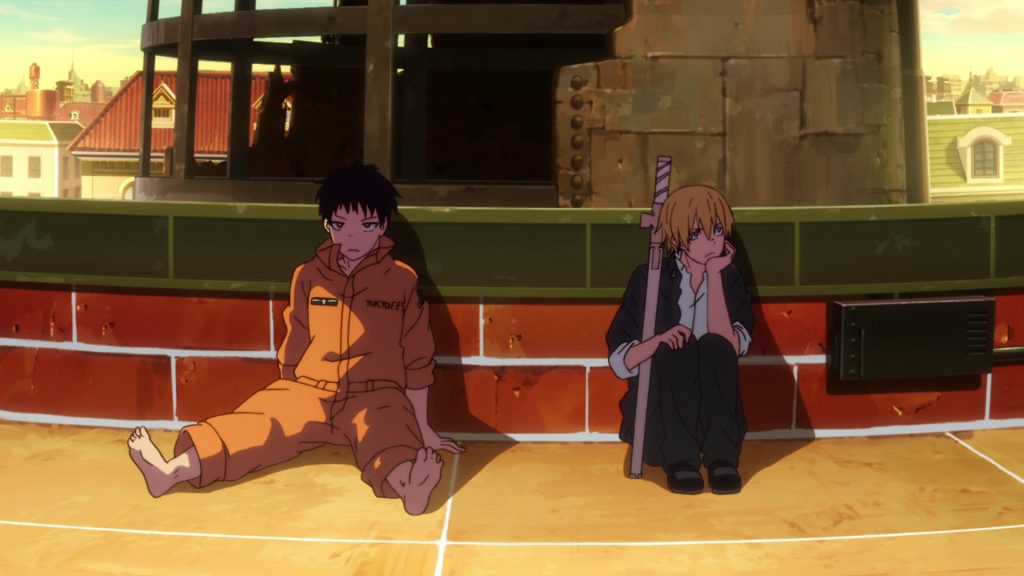
Fitting that our episode should open with talk of a rookie tournament considering the director at the helm is not too far removed from being one themselves! Shuntarou Tozawa (戸澤俊太郎) can only be found credited as recently as last year as a full-fledged episode director, yet that inexperience fails to show at all in the final product. As intriguing as that may be, it’s important to also keep in mind that as the series director, Yuki Yase has every reason to lend his expertise despite not being credited, both to Tozawa, as well as the story boarder, whom unsurprisingly happens to be a former SHAFT colleague of his, Hiroko Kazui!
Yase’s presence can certainly be felt in the more tangible aesthetic choices predominantly scattered throughout, such as the kagenashi mobs, restructuring of manga content, intuitive transitions between cuts and perhaps even some of the more striking color palettes. For this reason, it can be hard to ascertain Tozawa’s precise contributions in most of the creative aspects, especially since they’re relatively new to the job, only time and a larger sample size will tell. Though if I had to say, there is one thing Yase probably did not touch: the pacing. This is safe to assume since it would require far too much involvement on his part to make a difference in that regard, as it spans essentially the entire episode. It becomes abundantly clear from fairly early on, the obtuse, down-tempo pacing pervades nearly every cut, most of which feel as if they linger for far longer than necessary. It’s not a bad thing in it’s own right, such an unusual style should be welcomed in a genre that is normally extremely stagnant, though I can also understand why for some it was too much.
It can be quite the frustrating feeling as your brain, accustomed to scene changes occurring as soon as a character stops speaking, is instead met with uncomfortable levels of dissonance and awkward silence. While I don’t feel it’s at it’s strongest in the first half, the somber melancholy of the second is where this approach truly shines, more on that later.
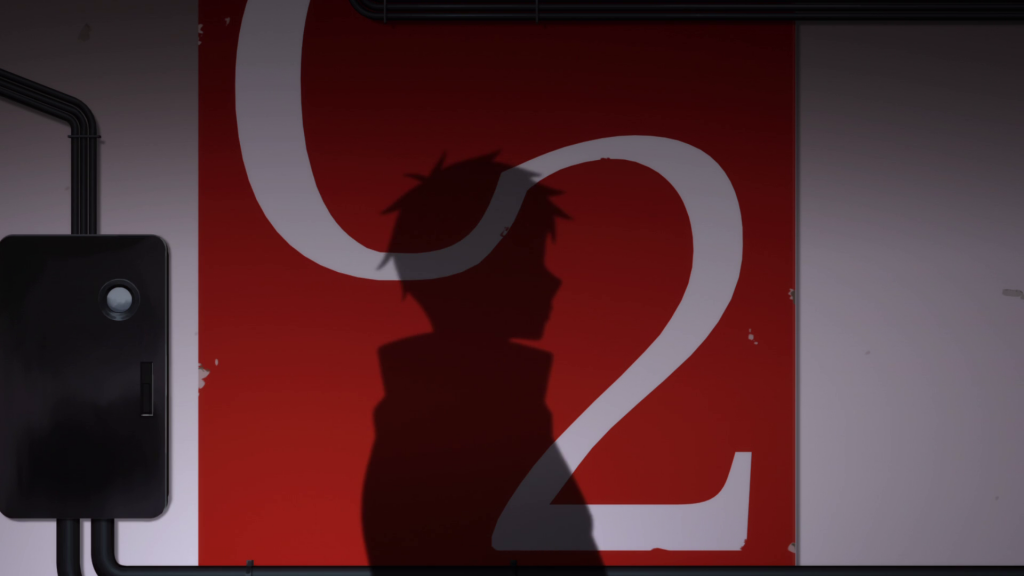
Getting back to the episode at hand, the flow between cuts found prior to (and even into!) the opening sequence have the fingerprints of a veteran talent all over them. Notably the match cut, weaving past and present effortlessly together. Far from being finished with the slick transitions, we are soon greeted by a profile shot. Harmless in it’s own right, however when paired with the flashback, the intentionally narrow lens it’s presented in sets us up to be deceived as to the real target of Shinra’s sinister grin, allowing for a new character to be incorporated into the same cut from out of nowhere without skipping even a beat:
Such a technically proficient pre-opening sequence is just one of many ways the anime has improved on the source material it’s borrowing from. Atsushi Ohkubo has expressed in the past that he’s content with the staff making creative changes to his manga, and as of yet it’s clear the Fire Force team has taken that message to heart.
In a similar way to Soul Eater, we’re already seeing attempts to build on character development in areas where it may be lacking. Take for example, the brief but disturbing interlude between harmless rooftop conversation. Iris’ eye spontaneously becomes engulfed by flames, she reaches skyward through their now warped state but the flora-named girl finds nothing. Quite the incoherent vision, but regardless of whether it’s understood or not, it has served it’s purpose as we are now aware there is ominous lore existing behind this character’s otherwise unassuming presence. (Though Taiki Konno‘s brilliant ED illustrations already suggested that!)
Continuing the trend of breaking from the manga, we are met with a break of a different kind: the 4th wall. I was viscerally taken aback when Shinra turned towards the camera and actually had to wrack my brain for a moment to remember which character was standing out of shot, but at this point there is indeed just the four of them present on the roof. It’s such a rarely used convention that I’m sure I wasn’t the only one caught off guard. The specific two lines they chose to emote to the audience could also not be more perfect. By asking a question, Shinra engages the viewer in a playful manner and then naturally Arthur turns to give a wink as if to answer his rhetorical question for us. It’s a short, but nonetheless theatrical showing, donating personality aplenty to two very important characters!

I’m going to now address the next major section slightly out of order because it’s imperative to understand the moral dilemma itself before unpacking why it works in this precise situation. The crux of the issue is found in the Infernals– the demon-like creatures our protagonists are programmed to defeat. Perhaps somewhere amongst the well-animated purgatory of the first episode, we are distracted from the fact that the antagonist was once a human being, one that as far as we know, did nothing to deserve their fate. This is the first time Shinra is forced to dwell on the heavy cross the Fire Force squad exists to bear, and Captain Obi being the leader that he is, makes sure that the two young recruits fully understand. Their aside conversation is a powerful one. Striking layouts, delicate color composition, and imposing low angles, all going a long way in stressing his point: that there should be no joy in what they do.
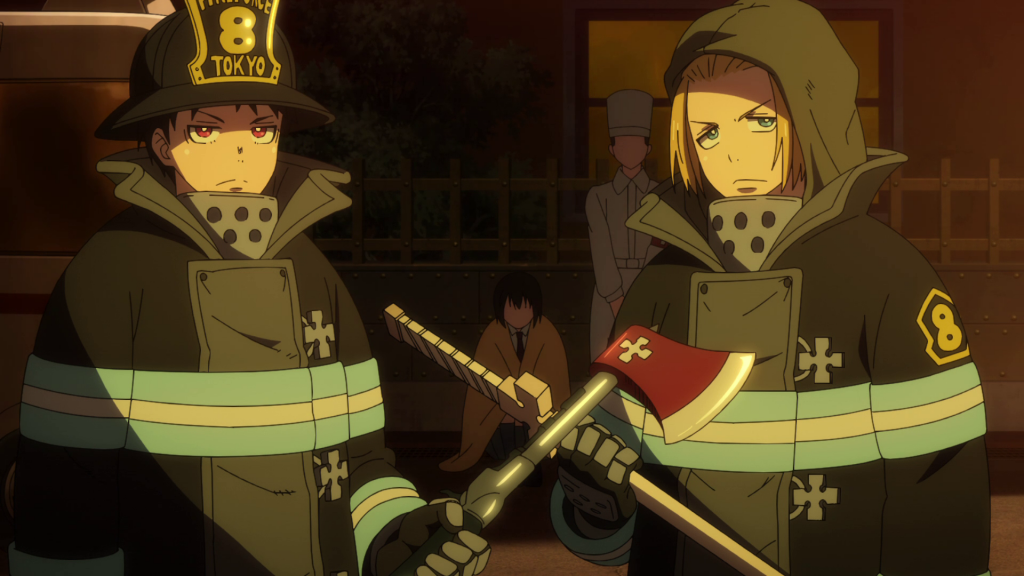
With that pervasive truth in mind, it makes the anime’s omission of the following scene extremely significant. In the manga, prior to our cast being alerted of a new infernal, Ohkubo attempts to channel a horror setting. In it, our nameless victim is blissfully going about her day until she is tragically greeted by her father who has now been transformed into a hollow, thus spelling his doom. The following page has sinister intent as he turns towards his daughter and utters a predictable line, before abruptly cutting to a different scene, leaving us to assume her fate for the time being. The problem with this part existing at all, is that it directly conflicts with the message trying to be presented a few pages later! By demonizing her father for shock value his humanity is compromised, the very humanity that we need to understand if we are to feel sympathy and compassion for these creatures, scheduled to be put down like livestock.
In stark contrast to the premiere, there is no fanfare or glory to the scene that follows. It’s almost jarring how nonchalantly the team enters the house, greeted by a demon-possessed figure sitting at what I can only assume to be his usual spot at the dinner table. The same place he would sit during any other day of the week, only now he is condemned to die. It is at this point where the aforementioned pacing is at it’s strongest. The anime does a phenomenal job of letting this stage breathe, dwelling on the gravity of the situation, allowing us time to parse the presented ethical dilemma.
The singed curtains drift casually with the wind as if to say nothing is amiss, yet meanwhile Shinra realizes for the first time that his dream of being a fire fighting hero is forever destined to fall short of the mark, as he will always arrive too late to the scene to save the real victim.
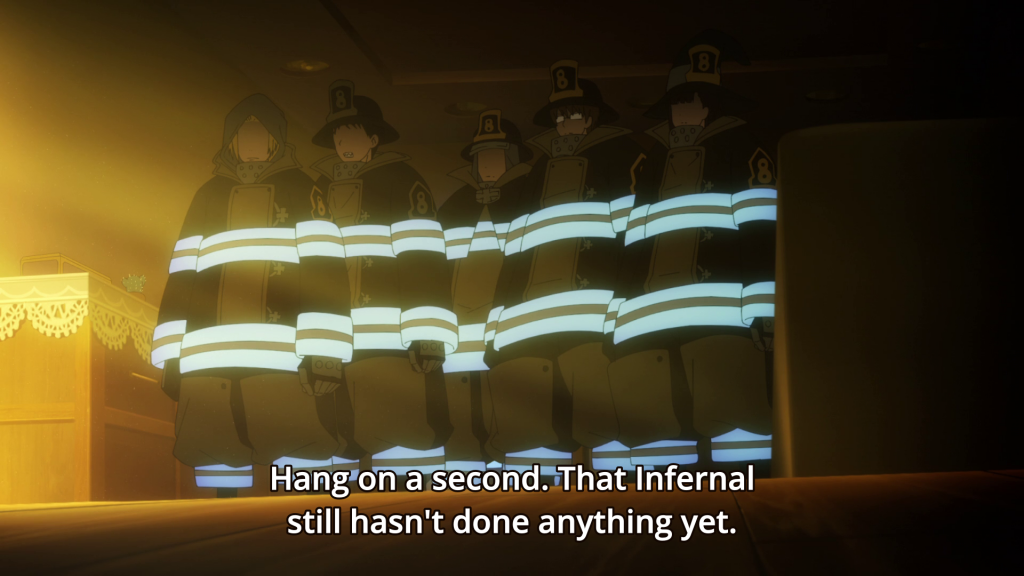
In something that can only be realized through the medium of animation, we are next met with three very symbolic cuts. The picture frame hitting the table makes a sound identical to the closing of a book- one which is now closing on the end of a family. Upon returning from the abyss we find our cast standing huddled, unsure of where to proceed. Arthur steps forward and volunteers his sword to put the father to rest. Black and white impact frames, normally the source of great excitement, instead serve to close the scene in a somber fashion.
With the deed done, the team brings their hands together to pray. Despite already being a sensitive situation in it’s own right, the religious rituals add intriguing amounts of nuance, and moreover, a plethora of spring boards for the story to then follow. Death and the afterlife, teachings of suffering, pain and mercy- all things integrally stemming from the concept of faith. Whether we will see any attempt at tackling such motifs remains to be seen, and well, having read a good portion of the manga myself, I wouldn’t exactly get my hopes up, but at the very least it’s reassuring to know that there are at least some layers to this narrative beyond what can easily be found on the surface.
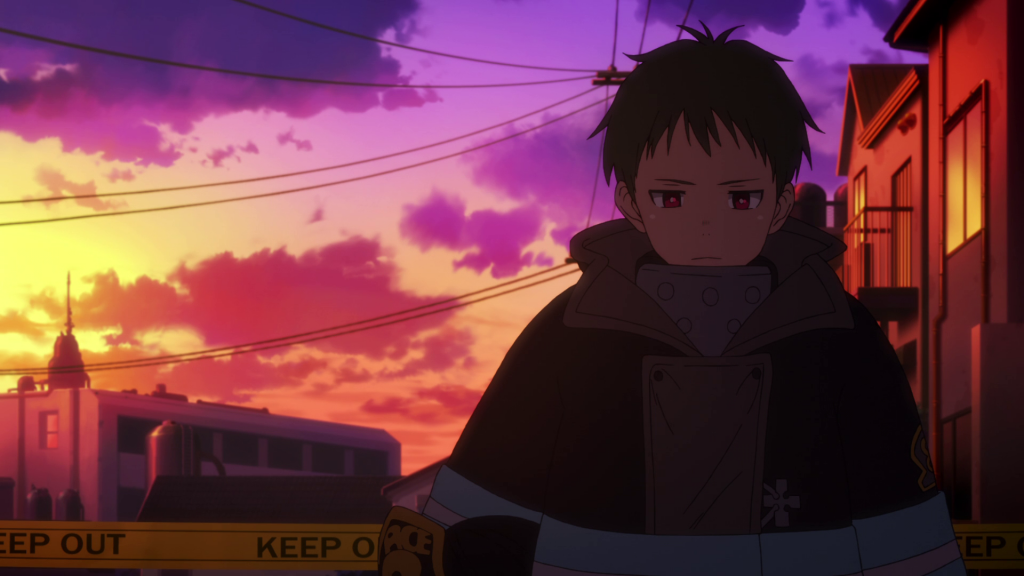

Speaking of layers, we get our first look at what one can assume is the figure orchestrating the confusion. His presence for now is merely limited to being a wild card, a joker, if you will… Since he has yet to physically confront the Force there’s not much to be said without entering spoiler territory, but we can at least appreciate the hell-spawn he stirred up, animated by Satoshi Sakai!
Where most would end in that climactic fashion, the anime instead takes a different approach. The final moments are headlined by an awkward but wholesome denouement with Shinra and Arthur sharing candid bunk-bed banter. Their sedated tones juxtapose the boisterous events of the morning, to suggest that the gloomy evening was enough to extinguish their rivalry for the time being. Shounen series rarely take the time to show the other side to the testosterone-fueled clashing, much to their detriment, so this is an appreciated addition.
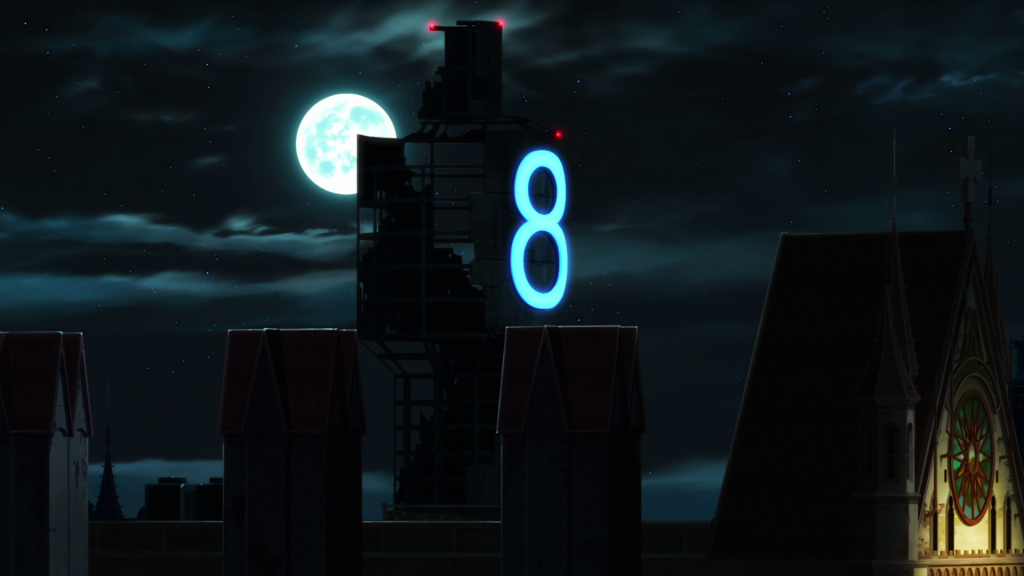
All told this was about as great of a follow up to the premiere as one could reasonably expect. Where the first got by on flashy action, methodical direction dominates the second. Hopefully, future episodes will continue to build on the creative effort the staff has given so far to ensure this adaptation has the strongest of legs. As long as they keep delivering pieces like this you can expect us to cover their progress at length!
